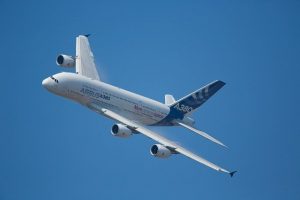 The way in which commercial pilots control their jets is changing. No longer are pilots required to use traditional mechanical controls. They can now use a touchscreen interface.
The way in which commercial pilots control their jets is changing. No longer are pilots required to use traditional mechanical controls. They can now use a touchscreen interface.
On Dec. 18, Airbus delivered the first of its touchscreen-equipped A350 XWB jets to China Eastern Airlines. The new A350 jets feature a touchscreen interface inside the cockpit, which pilots can use to perform various commands. The purpose of the touchscreen interface is to improve the ease and efficiency at which pilots can control the A350 jet. Rather than relying on mechanical controls, pilots can touch or tap the touchscreen interface. It’s a highly versatile alternative to mechanical controls that could prove to be a game changer in the commercial aviation industry.
How does the A350’s touchscreen interface work exactly? Like other touchscreen interfaces, it supports commands via physical touch. It shows icons and virtual buttons that, when pressed or tapped, will trigger a command. When compared to mechanical controls, touchscreen interfaces tend to promote higher productivity as well as input accuracy. For these reasons and others, Airbus believes its touchscreen interfaces will assist pilots in their efforts to safely navigate the skies.
The A350’s touchscreen interface has already received certification by the European Aviation Safety Administration (EASA). It’s important to note, however, that the touchscreen interface isn’t designed to replace certain mechanical controls. It’s simply designed to complement them. Airbus says the A350 will still feature a keyboard and trackball embedded in the centre console.
China Eastern Airlines isn’t the only commercial airline that’s opted for the touchscreen interface in its A350s. According to Airbus, approximately 20 commercial airlines have purchased the add-on option for touchscreen interfaces.
“Of the A350 XWB cockpit’s six large screens, three can now become touch capable: the two outer displays plus the lower-centre display. These displays now offer touchscreen capability for the pilots when presenting Electronic Flight Bag (EFB) applications. This new method of input complements the existing physical keyboard integrated into the retractable table in front of each pilot and also the keyboard and trackball “keyboard-cursor control unit” (KCCU) located on the centre console,” wrote Airbus in a press release announcing the new touchscreen-equipped A350.
Boeing has also expressed interest in touchscreen technology aboard its jets. The American aerospace manufacturing company says it’s working to integrate touchscreen interfaces into several of its 777X jets, which it plans to deliver to commercial airlines beginning in 2021.



